Apple has radically overhauled its iMac lineup for 2017, giving its 21.5 inch Retina 4K models dedicated graphics driven by AMD Radeon Pro 555/560 GPUs; a brighter display with enhanced P3 color; more powerful Intel Kaby Lake CPUs; upgradable RAM sockets; faster SSD drives and modern, ultrafast USB C and Thunderbolt 3 connectivity.
MacBook-style exterior design
Apple first announced its Retina Display 4K iMac a year and a half ago, one year after introducing the high-end new 5K iMac at the end of 2014. Providing the power of a desktop with the stunning design of Apple's light and thin MacBooks, the unibody all-in-one iMac line has become Apple's most popular desktop Mac model.
The new 2017 iMacs sport the same exceptionally thin aluminum body tapering down to 5mm edges, connected to an aluminum foot with a precise hinge that provides the accurately fluid adjustability of a MacBook display. If you want to wall mount your iMac, you can order it with a VESA adapter.
The fit and finish of iMacs remains extremely high; the body is rigid and strong and looks beautiful from all angles.
Externally, 2017's latest 4K iMac is essentially unchanged from previous editions, apart from its two Thunderbolt ports shifting from TB2 (Mini DisplayPort jacks) to TB3 (using USB-C jacks).
Thunderbolt 3 and Lightning, too
The 2017 iMacs' move follows the port migration first made on the Retina MacBook (which uses USB C) and last fall's redesigned MacBook Pro line (which introduced Thunderbolt 3, capable of driving multiple high resolution external displays and accessing external storage up to a blazing 40Gbps).
On the 4K iMac, the Thunderbolt 3 ports can drive a single external 5K (5120x2880) at 60Hz with support for 1 billion colors (10 bit color), or two external 4K UHD (3840x2160) displays at 60Hz with support for 1 billion colors; or two external 4K (4096x2304) displays at 60Hz with support for millions of colors (8 bit color).
The external monitor support works while also using the iMac's built-in 4K display with its support for 1 billion colors via 10-bit dithering. Apple has also enhanced the 4K iMac display, which now delivers brightness of 500 nits (43 percent brighter than before). The new 2017 iMacs do not feature Target Display Mode, which Apple stopped supporting entirely after the Mid 2014 iMac models.
In addition to the two new Thunderbolt 3/USB C ports— which support both USB 3.1 Gen 2 devices (up to 10 Gbps) and Thunderbolt 3 hardware (up to 40 Gbps)— Apple still provides four standard USB 3 ports, making it easy to plug in existing peripherals and iOS devices via Lightning cables without any adapters needed.
Apple even includes a Lightning cable in the box, provided to recharge the bundled, super-thin wedge of the wireless Magic Keyboard and the Magic Mouse 2— both of which have used Lightning to recharge their integrated batteries since their redesign in late 2015.
A faster Kaby Lake with new abilities
Inside, however, there's even more that's changed. The entry level 4K iMac now provides Intel's 7th Generation Kaby Lake quad-core Core i5 processor, which at 3.0GHz is notably more powerful than the 5th Generation Broadwell Core i5 used in the original "Late 2015" 4K iMac, despite being clocked 100MHz slower.
Among other things, Kaby Lake can hardware accelerate HEVC/H.265, the advanced new codec Apple will be using in macOS High Sierra and on new iOS 11 devices to slash the file size of 4K videos in half. The new Core i5 chip also packs 6MB of L3 cache, up from the previous model's 4MB L3.
We tested the higher tier model, which uses a 3.4 GHz Kaby Lake Core i5. It delivered a multicore Geekbench score of 13763 and single core score of 4733, both of which are 13 percent higher than the previous 4K model introduced at the same price (with scores of 12211 and 4182).
While an improvement, that's not a tremendous benchmarking leap across two annual generations of Intel processors, underlining why Apple has increasingly focused on driving real world Mac performance through more efficient task scheduling and GPGPU crunched by the graphics processor rather than the CPU.
Also note that over the same two years, Apple's custom designed A10 Fusion chip used in iPhone 7 delivered a CPU performance jump of 40 percent over last year's A9 and was twice as fast as the A8 chip that debuted in iPhone 6— alongside the original 4K iMac in late 2015.
It's also useful to point out that over the last several generations of its Core microarchitecture, Intel (like Apple in mobile) has focused on efficiency and power management rather than working exclusively to drive compute performance.
While the pace of benchmark number growth has slowed, this work has indeed benefitted the real-world performance of Intel iMacs.
As noted by our video producer Max Yuryev, the high-end 5K iMac from 2014 would start to overheat and slow down the CPU if pushed hard, resulting in a thermal throttle on performance.
The Late 2015 model's more efficient Skylake processors helped reduce temperatures just enough under full load to eliminate slowdowns under extended high-performance use, Yuryev noted.
The newest 2017 iMacs with Kaby Lake processors run even cooler, allowing the machines to maintain full-tilt workloads for extended periods of time.
Faster, dedicated AMD graphics
The entry level 4K iMac now provides dedicated graphics: an AMD Radeon Pro 555 with 2GB video memory, compared to the previous 4K iMac which used Intel's less powerful, Iris Pro integrated GPU (and didn't offer any graphic upgrade options). The new 4K iMac also offers an enhanced tier option of a Radeon Pro 560 GPU with 4GB video memory, which was in the unit we tested.
While Apple doesn't make any mention of CPU benchmarks on its website, it does claim graphics performance of up to 1.5x faster video editing, 2x faster 3D graphics and 3x faster gaming on the higher tier 4K iMac, thanks to its faster, dedicated GPU architecture.
4K and 5K iMacs retain the same solid lines with revamped internalsThat's a much larger leap than on the Intel CPU side, but still appears to fall short of what Apple has been delivering in mobile on the GPU side over the past two years. Its A10 Fusion graphics performance was 50 faster than the A9 and three times as fast as the A8, even while using half as much energy.
In previous generations of iMacs, graphics hardware contributed to the thermal issues noted above that could throttle performance. While Intel enhanced the efficiency of its CPUs, their graphics cores remained the same so the heat generated was still very high.
Kaby Lake iMacs also benefit from a chip die shrink from 28nm to 14nm on the graphics, further bring temperatures down even as overall performance continues to go up.
Built for VR
While faster overall in many ways, the new 4K and 5K iMacs are designed with the particular objective of being suited for advanced graphics content and development.
Apple recommends its 5K iMac with Radeon Pro 580 graphics (and 8GB of video memory) for 3D VR content creation and immersive 360 degree video editing — a feature it is adding to Final Cut Pro X later this year, apparently based on the hiring of 360VR Toolbox developer Tim Dashwood.
Apple is aiming its new iMacs toward 3D and 360 degree VR developmentAlong with more powerful dedicated GPUs of their own, their two USB-C connectors supporting Thunderbolt 3 will enable external graphics cards under macOS High Sierra (Thunderbolt 3 is essentially an external PCIe data expansion slot over a cable).
Last week at WWDC, Apple showed off the new Mac's VR capabilities by inviting Industrial Light and Magic to the stage to demonstrate laying out a Star Wars themed VR 3D scene using Epic's Unreal Engine, and rendering it on an iMac at a smooth 90 frames per second.
Being fast for VR also means the new iMacs work well for existing advanced media workflows ranging from Final Cut Pro X editing to Logic X production, as well as for consumer apps like Photos, GarageBand and iMovie.
Faster, upgradable RAM architecture and storage options
Both 4K iMac options also now use a faster RAM architecture: 2400MHz PC4-19200 DDR4 (compared to 1867MHz PC3-14900 LPDDR3 in the previous generation). Further, the RAM is no longer soldered in, so it can be upgraded beyond what it was ordered with.
The new models support upgrading from the standard 8GB to 32GB. While their RAM is socketed, the 21.5 inch models do require some advanced disassembly to access the memory for upgrades, so they are not actually "user serviceable" as the 27 inch 5K iMacs are.
The new iMacs also now support Bluetooth 4.2, which Apple began incorporating on its iOS devices in 2015, starting with iPhone 6 and iPad Air 2, and continue to supply a Gigabit Ethernet port and an SDXC slot for digital photographers.
The more expensive 2017 4K iMac tier— which provides Apple's faster SDD-accelerated 1TB Fusion Drive (compared to the standard hard drive included in the previous base model 4K iMac), along with all the other improvements detailed above (including the better Radeon Pro 560 GPU and a bit faster 3.4GHz Core i5)— is now priced at $1,499, the same price that the original 4K iMac debuted at.
Upgrade options
While much faster than a conventional hard drive, Apple's Fusion Drive (a hybrid 1TB hard drive with 32GB of SSD cache) might not be fast enough for doing higher-end workloads. Upgrading the 4K iMac to a full SSD costs $100 for 256GB, $300 for 512GB and $700 for a 1TB SSD. Thunderbolt 3 connectivity also enables pro users to attach external SSD or RAID storage for working with video.
Another built-in alternative that's less expensive— and offers far more capacity than is affordable via pure SSD— is going with a larger Fusion Drive. Apple's 2TB and 3TB Fusion Drives incorporate 128GB of SSD cache, but are only available on the 27 inch 5K iMac (as $200 and $300 options, respectively). Apple actually recommends that an iMac with 32GB or more RAM "should be configured with a 2TB or larger Fusion Drive or all-SSD storage."
The higher tier 4K iMac can be upgraded to a 3.6GHz Core i7 with 8MB of L3 cache upgrade option for $300, while a RAM upgrade to 16GB costs $200 (moving to 32GB will set you back $600, although less expensive upgrades and DIY kits are available from third parties
Apple also now offers a $1,299 entry level 4K iMac, which skimps on price by using a basic (and much less responsive) 5400 rpm 1TB hard drive. Moving it to a Fusion Drive costs $100, half the difference of moving to the higher tier. Considering the lag involved with the standard hard drive (as well as everything else you get at the higher tier) it makes more sense to buy the better model, as is generally the case.
The base tier also offers a 3.6GHz Core i7 upgrade option, but it's also more expensive at $300. It also only offers an upgrade option to 16GB for $200, although greater RAM expansion may be available from third parties.
Both models can be ordered with Apple's Magic Trackpad 2 instead of the standard Magic Mouse 2 for $50 more, or you can get both pointing devices for an additional $129. Also new this summer is Apple's wireless Magic Keyboard with Numeric Keypad, sold separately for $129.
Other 2017 iMac options
Alongside its Retina 4K iMacs, Apple also offers a refreshed, non-Retina (1920x1080) 21.5 inch iMac with a 2.3GHz dual-core Kaby Lake CPU and Intel Iris Plus graphics, a faster LPDDR4 RAM architecture and Thunderbolt 3, with a standard 1TB hard drive for $1099.
Apple also upgraded its 27 inch 5K (5120x2880) iMac with Kaby Lake CPUs ranging from a 3.4GHz Core i5 7500 to a 3.8GHz Core i5 7600K, or a 4.3GHz Core i7 7700K; GPU options of the Radeon Pro 570 with 4GB or Radeon Pro 580 with 8GB; and RAM upgrade potential to 64GB using four slots (that are actually user accessible). The 5K model tiers range from $1799 to $2299.
Conclusion
The latest Kaby Lake iMacs deliver strong refinements to Apple's most popular desktop Mac line. Later this year, Apple will introduce at even higher end iMac Pro that goes even further, albeit at a premium price, starting at $5000.
The 4K Mac models deliver strong performance at the same price as previous models, although we recommend users opt for at least the middle tier (or upgrade beyond the cost effective but performance penalizing standard hard drive to get a Fusion Drive).
iMacs naturally deliver greater performance than a more mobile notebook, but also only have a single pair of Thunderbolt 3 connectors, so users who want to drive dual 5K displays will either have to opt for a 15 inch MacBook Pro or wait for the iMac Pro this December.
The SD card on the new iMacs also only supports UHS-1 speeds. Most new cameras support UHS-2 SDXC cards, so professional and enthusiast photographers have another reason to consider waiting for the iMac Pro.
However, for mainstream graphics, video and office users who play video games— and others living in the iMac sweet spot— the Kaby Lake generation of iMacs offers a great lineup for new buyers to jump in or a strong upgrade for users looking for faster, sustained performance in a great looking package with a breathtaking display and strong connectivity features.
Score: 4.5 out of 5
Where to buy
Apple authorized reseller Adorama is offering AI readers an additional $50 off every Mid 2017 21.5-inch iMac 4K with exclusive promo code APINSIDER using the step-by-step instructions below. This coupon stacks with instant rebates at Adorama, bringing the total discount to $70 off MSRP. What's more, Adorama will not collect sales tax on orders shipped outside NY and NJ (another $100 to $234 in savings for many shoppers) — and shipping is free.
Mid 2017 21.5-inch iMac 4Ks
21" (3.0GHz 8GB 1TB HDD Radeon 555) for $1,229.00 * ($70 off + no tax outside NY & NJ)
21" (3.0GHz 8GB 1TB FUS Radeon 555) for $1,329.00 * ($70 off + no tax outside NY & NJ)
21" (3.0GHz 8GB 256GB SSD Radeon 555) for $1,429.00 * ($70 off + no tax outside NY & NJ)
21" (3.0GHz 8GB 512GB SSD Radeon 555) for $1,629.00 * ($70 off + no tax outside NY & NJ)
21" (3.0GHz 8GB 1TB HDD Radeon 555) for $1,429.00 * ($70 off + no tax outside NY & NJ)
21" (3.0GHz 16GB 1TB FUS Radeon 555) for $1,529.00 * ($70 off + no tax outside NY & NJ)
21" (3.0GHz 16GB 256GB SSD Radeon 555) for $1,629.00 * ($70 off + no tax outside NY & NJ)
21" (3.0GHz 16GB 512GB SSD Radeon 555) for $1,829.00 * ($70 off + no tax outside NY & NJ)
21" (3.6GHz 8GB 1TB HDD Radeon 555) for $1,529.00 * ($70 off + no tax outside NY & NJ)
21" (3.6GHz 8GB 1TB FUS Radeon 555) for $1,629.00 * ($70 off + no tax outside NY & NJ)
21" (3.6GHz 8GB 256GB SSD Radeon 555) for $1,729.00 * ($70 off + no tax outside NY & NJ)
21" (3.6GHz 8GB 512GB SSD Radeon 555) for $1,929.00 * ($70 off + no tax outside NY & NJ)
21" (3.6GHz 16GB 1TB HDD Radeon 555) for $1,729.00 * ($70 off + no tax outside NY & NJ)
21" (3.6GHz 16GB 1TB FUS Radeon 555) for $1,829.00 * ($70 off + no tax outside NY & NJ)
21" (3.6GHz 16GB 256GB SSD Radeon 555) for $1,929.00 * ($70 off + no tax outside NY & NJ)
21" (3.6GHz 16GB 512GB SSD Radeon 555) for $2,129.00 * ($70 off + no tax outside NY & NJ)
21" (3.4GHz 8GB 1TB FUS Radeon 560) for $1,429.00 * ($70 off + no tax outside NY & NJ)
21" (3.4GHz 8GB 256GB SSD Radeon 560) for $1,529.00 * ($70 off + no tax outside NY & NJ)
21" (3.4GHz 8GB 512GB SSD Radeon 560) for $1,729.00 * ($70 off + no tax outside NY & NJ)
21" (3.4GHz 8GB 1TB SSD Radeon 560) for $2,129.00 * ($70 off + no tax outside NY & NJ)
21" (3.4GHz 16GB 1TB FUS Radeon 560) for $1,629.00 * ($70 off + no tax outside NY & NJ)
21" (3.4GHz 16GB 256GB SSD Radeon 560) for $1,729.00 * ($70 off + no tax outside NY & NJ)
21" (3.4GHz 16GB 512GB SSD Radeon 560) for $1,929.00 * ($70 off + no tax outside NY & NJ)
21" (3.4GHz 16GB 1TB SSD Radeon 560) for $2,329.00 * ($70 off + no tax outside NY & NJ)
21" (3.4GHz 32GB 1TB FUS Radeon 560) for $2,029.00 * ($70 off + no tax outside NY & NJ)
21" (3.4GHz 32GB 256GB SSD Radeon 560) for $2,129.00 * ($70 off + no tax outside NY & NJ)
21"(3.4GHz 32GB 512GB SSD Radeon 560) for $2,329.00 * ($70 off + no tax outside NY & NJ)
21" (3.4GHz 32GB 1TB SSD Radeon 560) for $2,729.00 * ($70 off + no tax outside NY & NJ)
21" (3.6GHz 8GB 1TB FUS Radeon 560) for $1,629.00 * ($70 off + no tax outside NY & NJ)
21" (3.6GHz 8GB 256GB SSD Radeon 560) for $1,729.00 * ($70 off + no tax outside NY & NJ)
21" (3.6GHz 8GB 512GB SSD Radeon 560) for $1,929.00 * ($70 off + no tax outside NY & NJ)
21" (3.6GHz 8GB 1TB SSD Radeon 560) for $2,329.00 * ($70 off + no tax outside NY & NJ)
21" (3.6GHz 16GB 1TB FUS Radeon 560) for $1,829.00 * ($70 off + no tax outside NY & NJ)
21" (3.6GHz 16GB 256GB SSD Radeon 560) for $1,929.00 * ($70 off + no tax outside NY & NJ)
21" (3.6GHz 16GB 512GB SSD Radeon 560) for $2,129.00 * ($70 off + no tax outside NY & NJ)
21" (3.6GHz 16GB 1TB SSD Radeon 560) for $2,529.00 * ($70 off + no tax outside NY & NJ)
21" (3.6GHz 32GB 1TB FUS Radeon 560) for $2,229.00 * ($70 off + no tax outside NY & NJ)
21" (3.6GHz 32GB 256GB SSD Radeon 560) for $2,329.00 * ($70 off + no tax outside NY & NJ)
21" (3.6GHz 32GB 512GB SSD Radeon 560) for $2,529.00 * ($70 off + no tax outside NY & NJ)
21" (3.6GHz 32GB 1TB SSD Radeon 560) for $2,929.00 * ($70 off + no tax outside NY & NJ)
*Price with coupon code APINSIDER using the step-by-step instructions below. Adorama will not collect sales tax on orders shipped outside NY and NJ. Discounts reflect total savings off MSRP.
(%) Step by Step Instructions for these Deals at Adorama
- 1) Make sure you're using a browser with cookies enabled that isn't in private mode.
2) Click on the price link to the desired configuration from this article or the Adorama price links in our Price Guides. You MUST click through our links in the same shopping session that you use our coupon. If you try to save a link for late, the coupon WON'T WORK. Once you click through a price link, you'll see a price that's higher than advertised (we'll fix that in a moment).
3) Add the MacBook to your cart anyway, and when you're done shopping, begin the checkout process.
4) After you enter your shipping information, move to the Payment section during checkout.
5) Look for a link that says "Do you have a gift card or promo code?" next to the gift icon. Click that to bring up a coupon code field.
6) Enter the coupon code APINSIDER in the field and click apply. The discount should appear under "Promo Savings" above the order total.
7) That's it. If you live outside NY & NJ Adorama will also not collect sales tax on your order.
As always, if you have any issues, you can reach out to us at priceguides@gmail.com and we'll try and help.
 Daniel Eran Dilger
Daniel Eran Dilger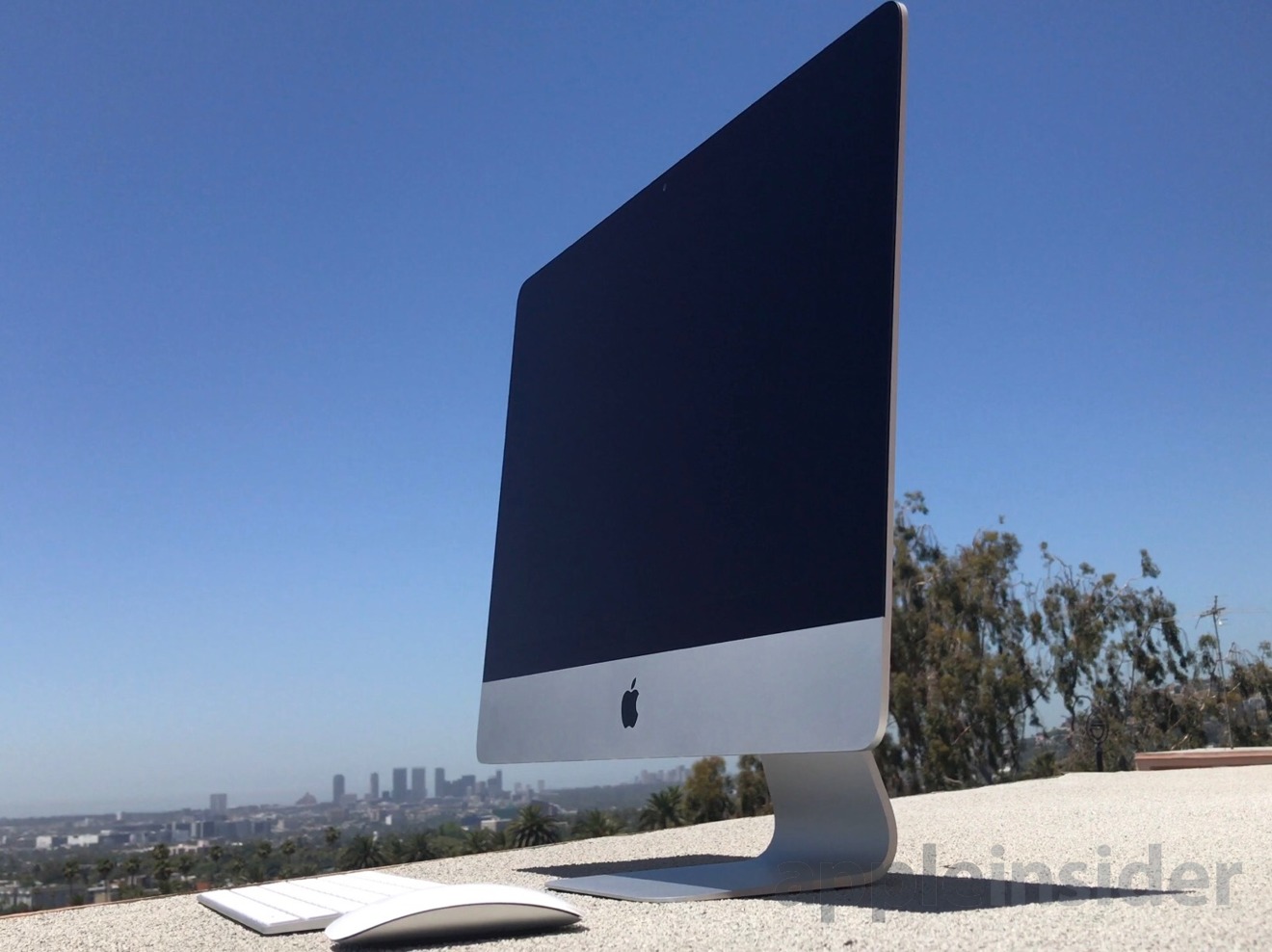
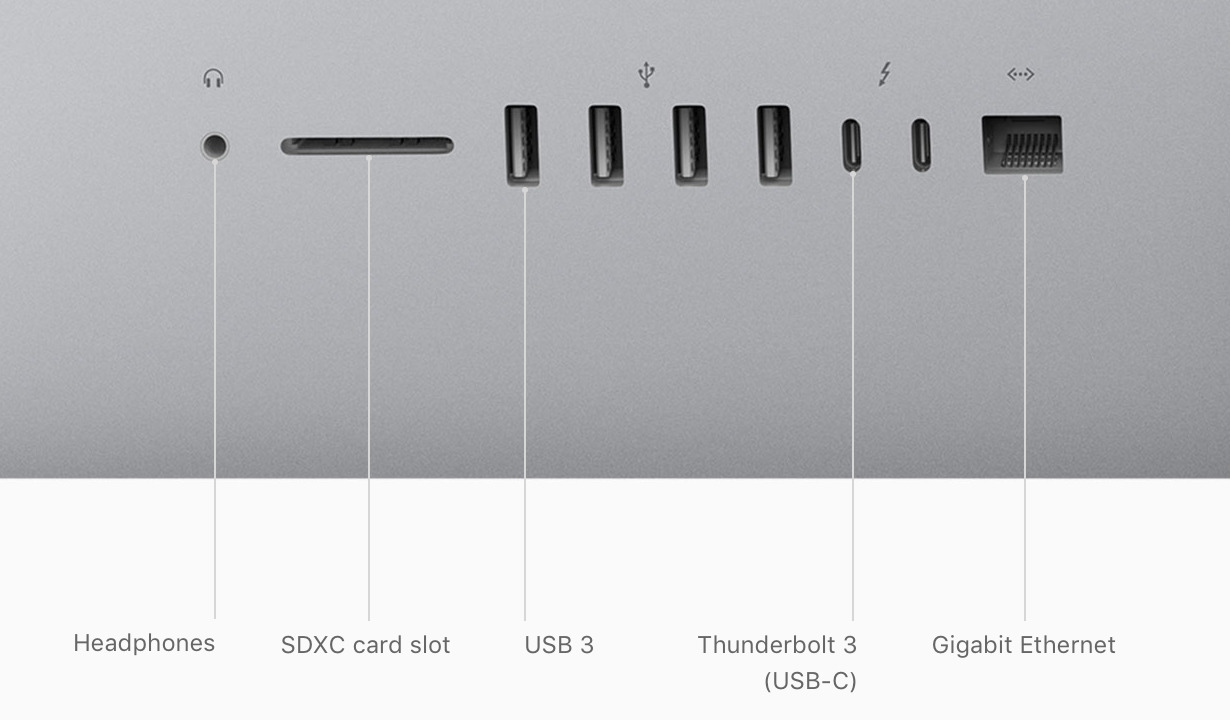
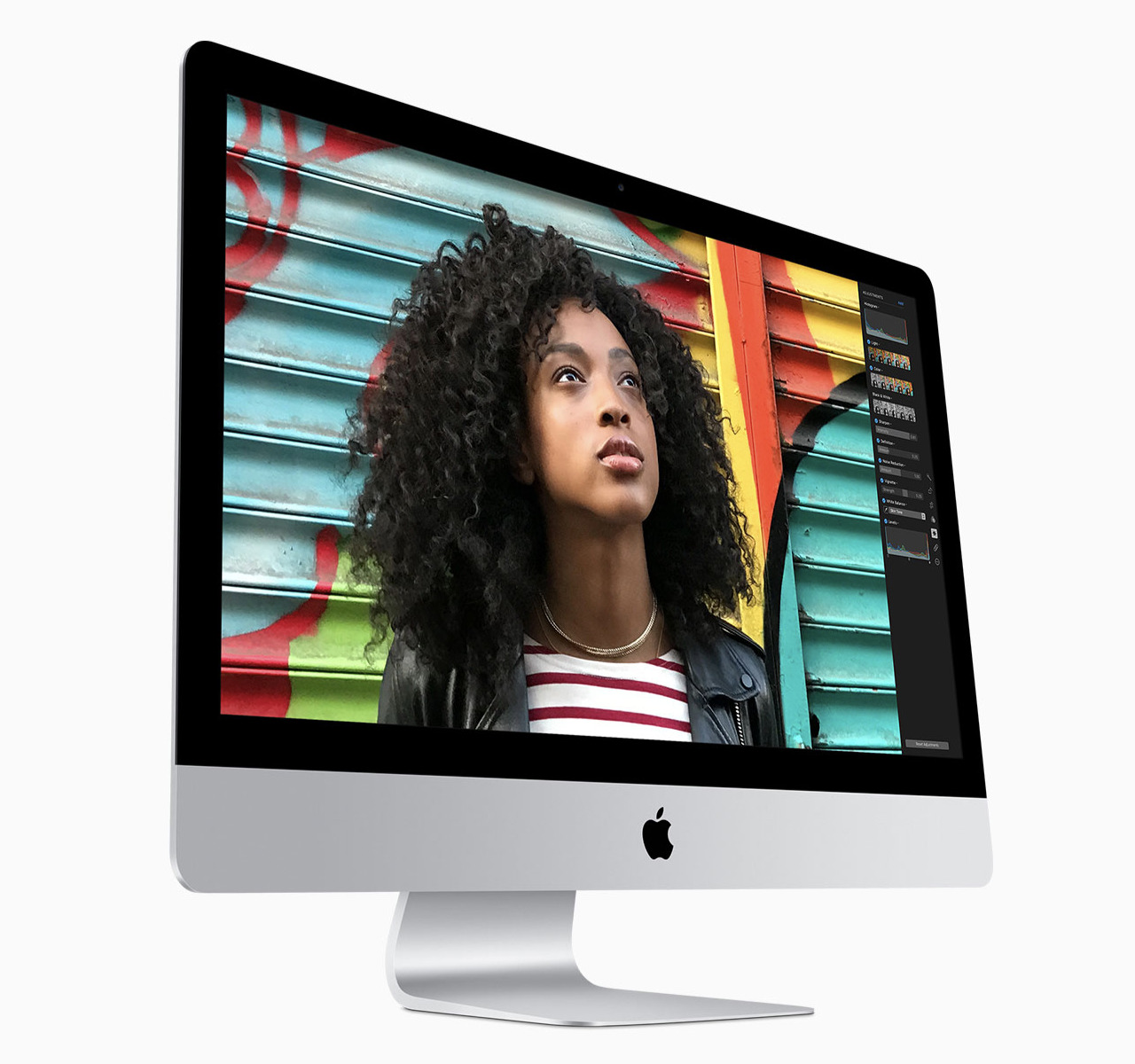
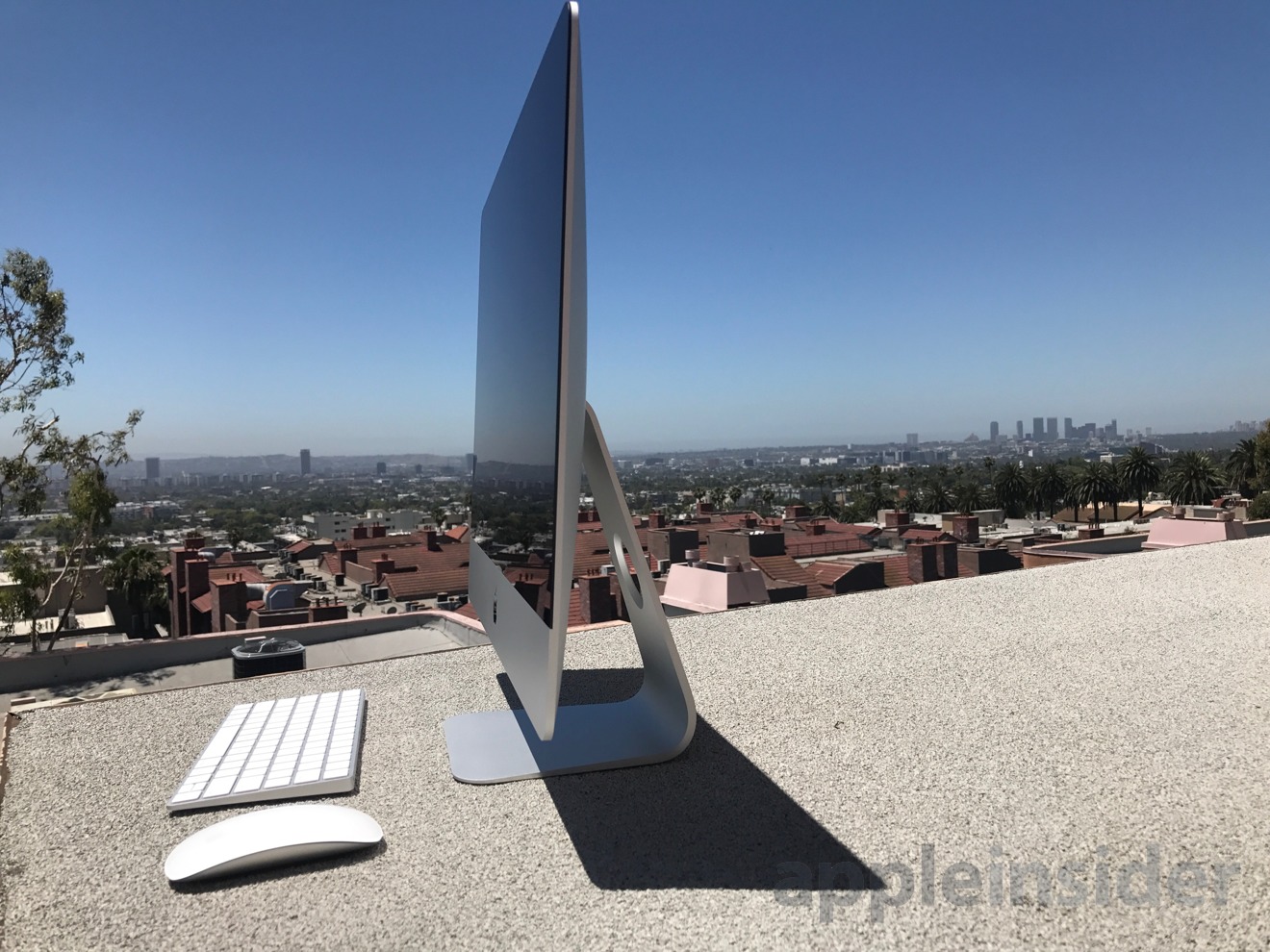
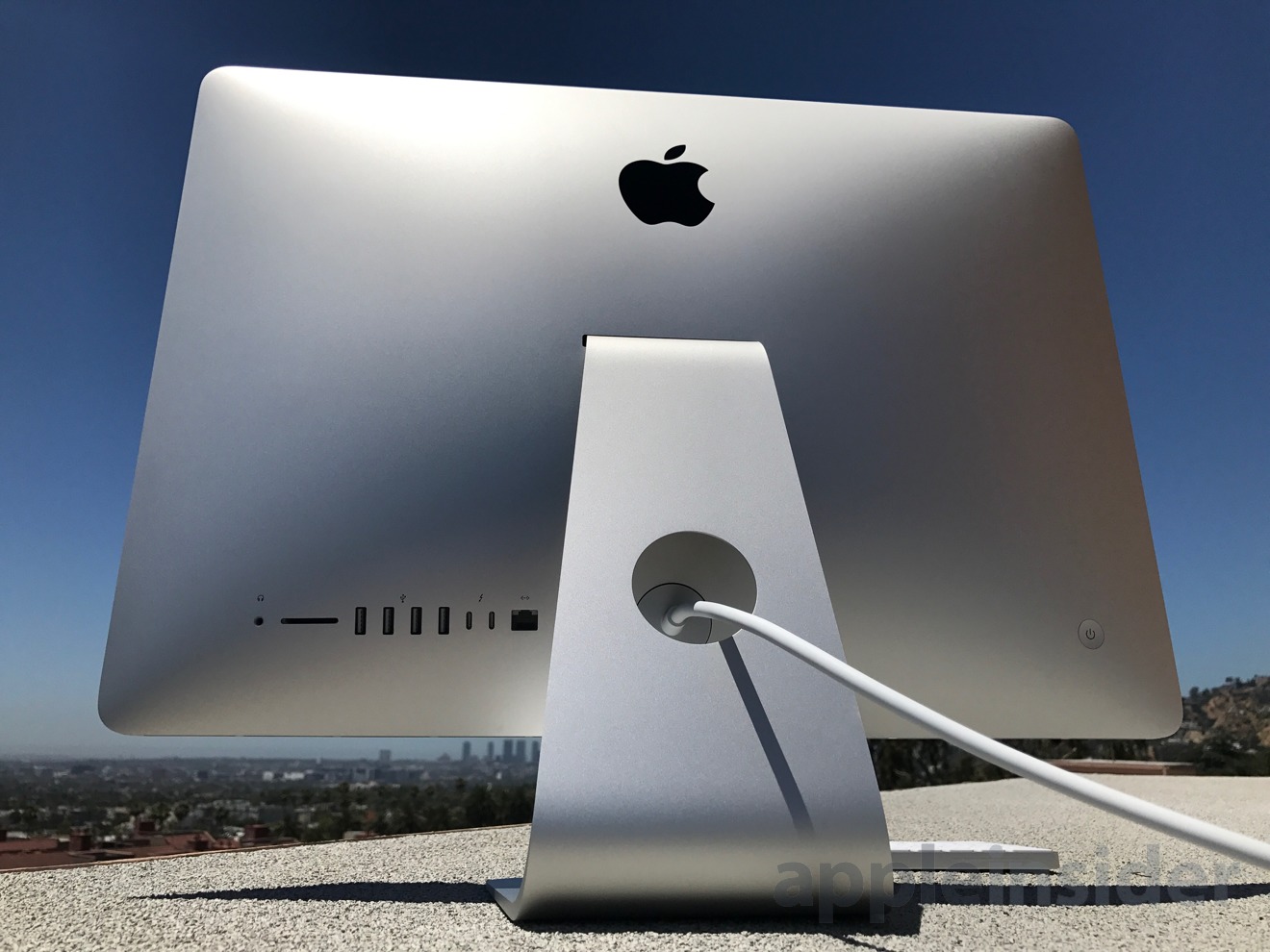
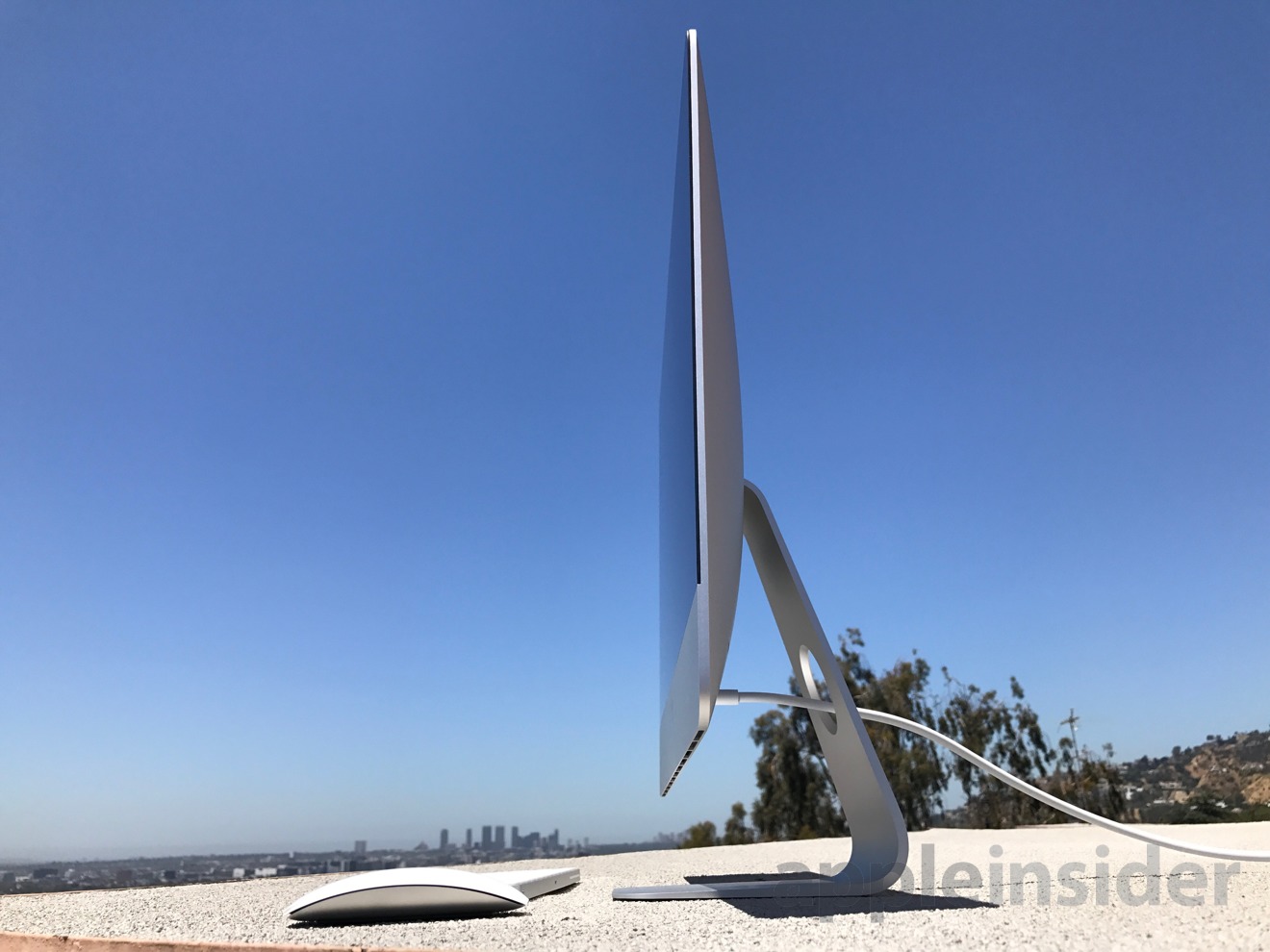
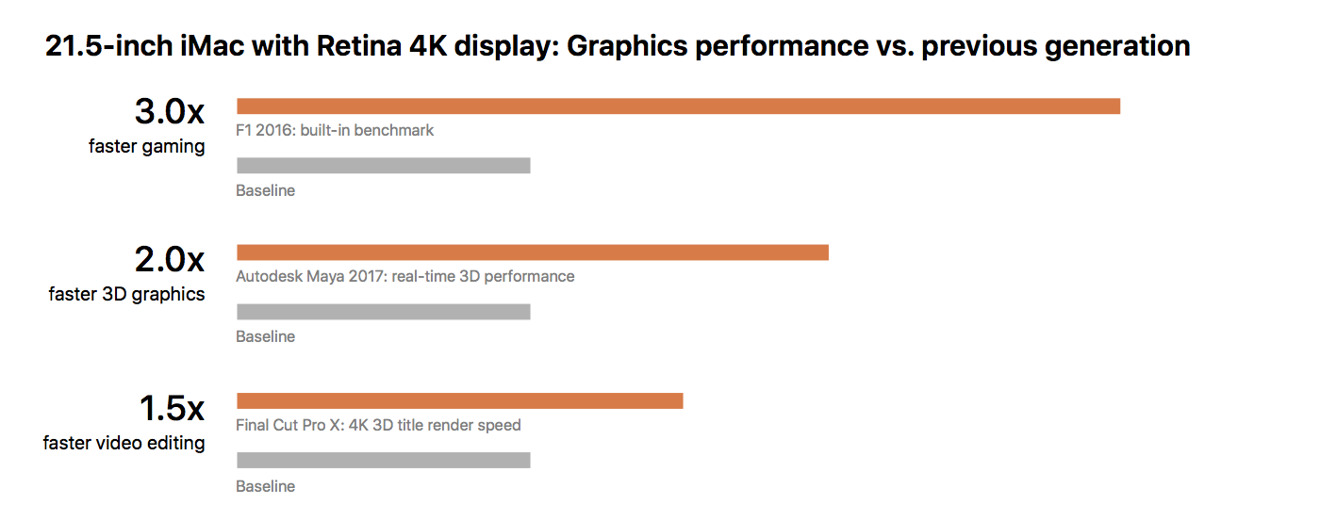
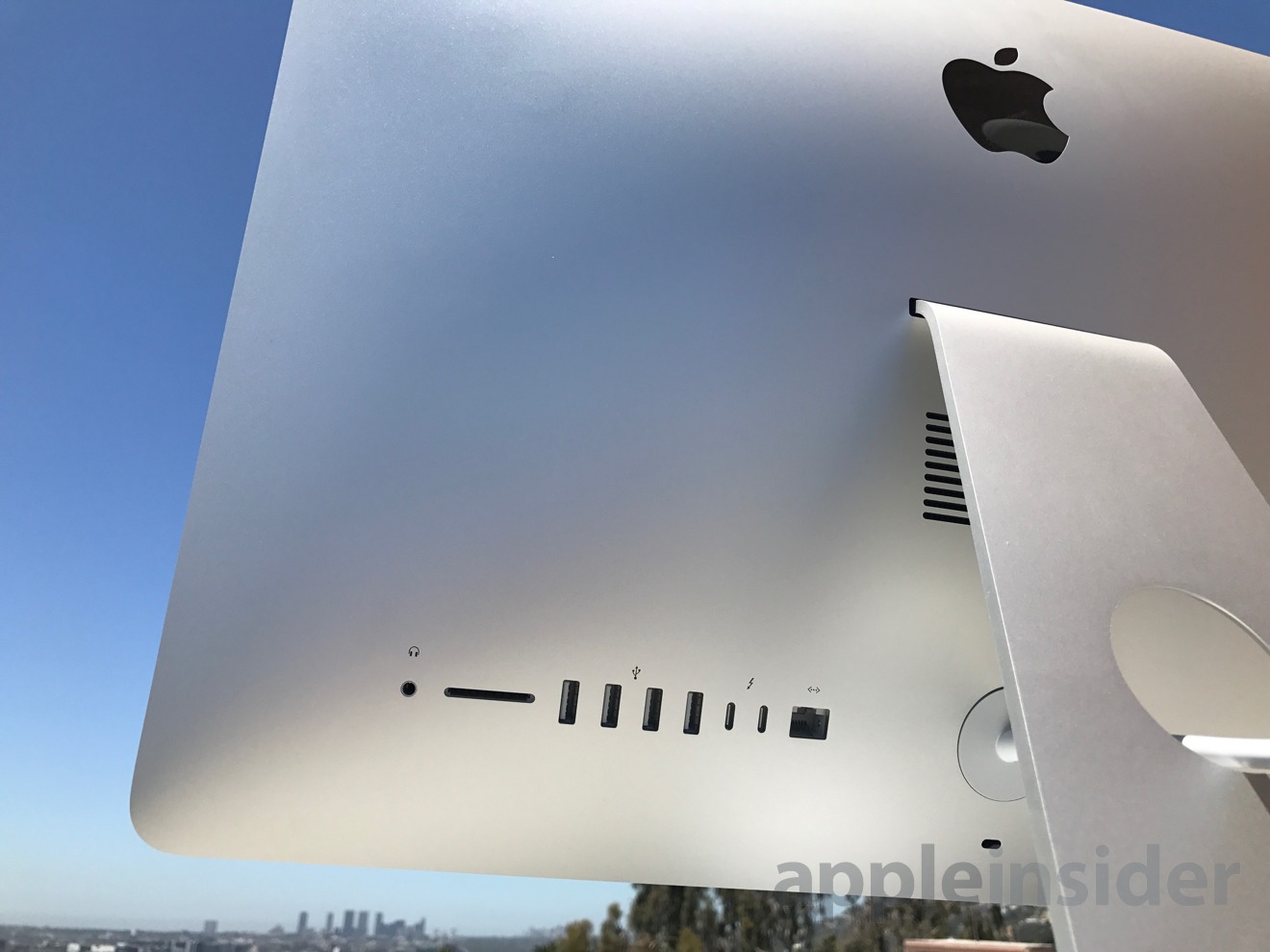
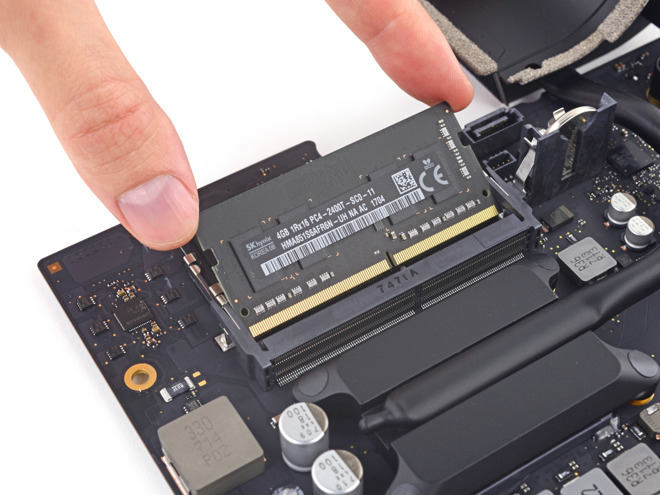
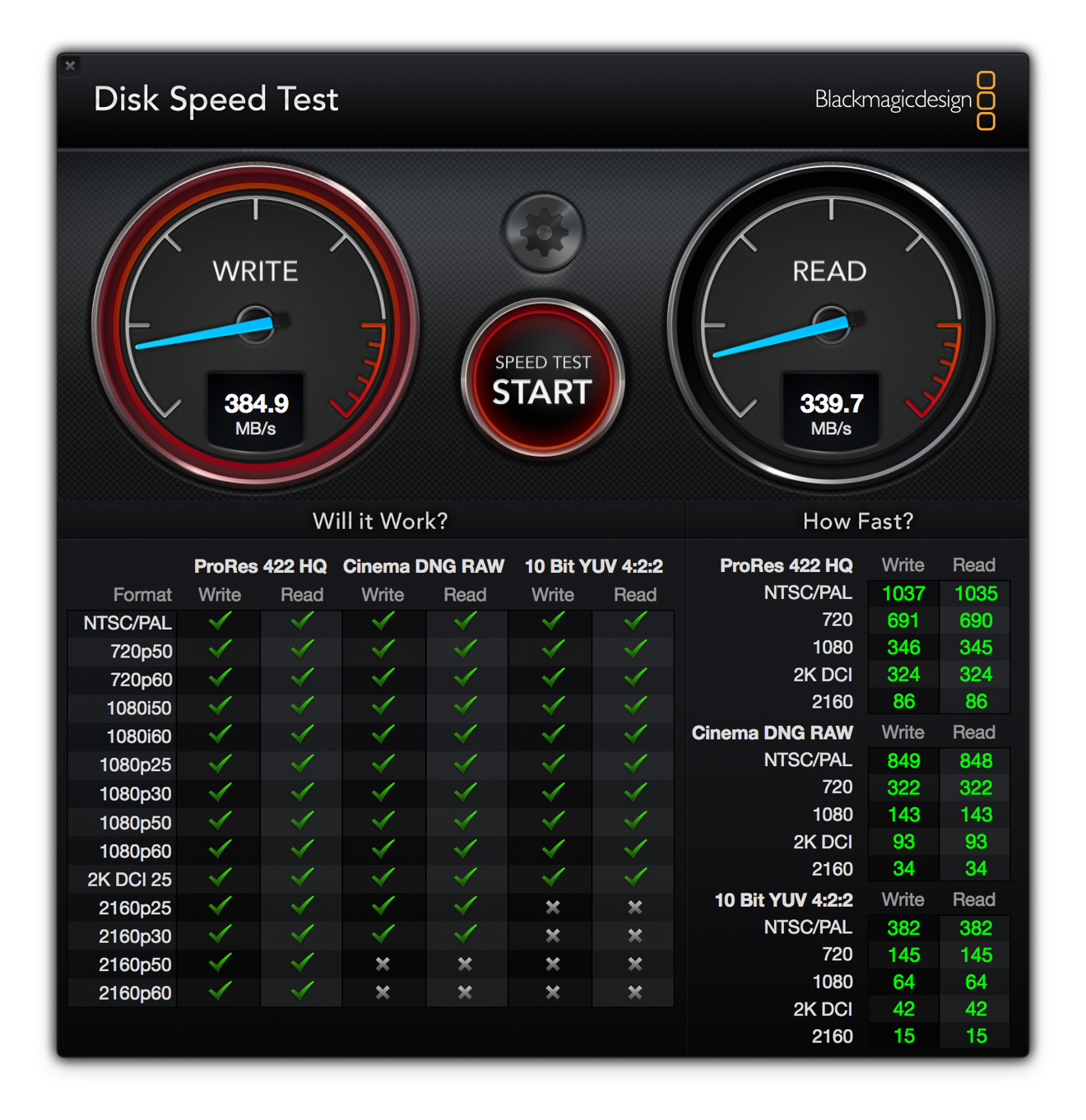
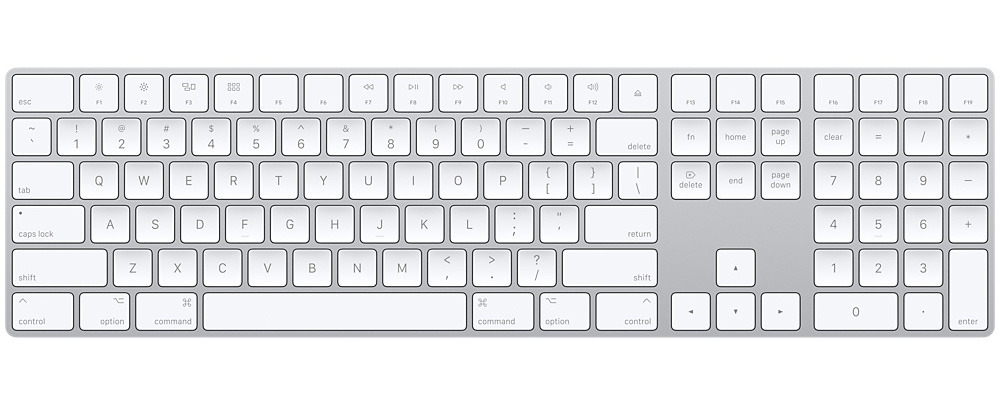









-m.jpg)






 Christine McKee
Christine McKee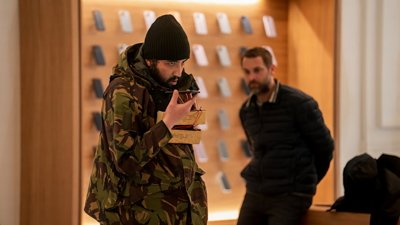
 Malcolm Owen
Malcolm Owen

 Charles Martin
Charles Martin
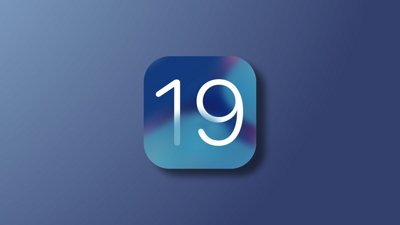

 Mike Wuerthele
Mike Wuerthele
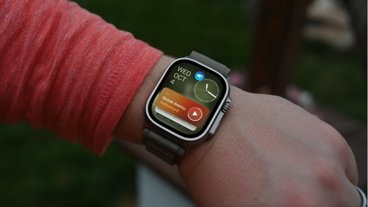


-m.jpg)






20 Comments
A pretty decent 21.5" iMac actually, been a while since we had one
If my car goes twice as fast as yours, it is "100% faster than" yours, not 200% faster than. I love Apple, but why does it persist on this false wording? If they insist on using the number 200% then they should say "200% as fast as" not "200% faster than".
This sounds like a great machine... But I'll never buy one. It just offends my sense of economics that you would have to throw out an entire system because a single component breaks or becomes obsolete. True, we do that with phones, tablets and (mostly) laptops, but those have portability requirements that necessitate that compromise. But, why a desktop sized computer? Not for me...